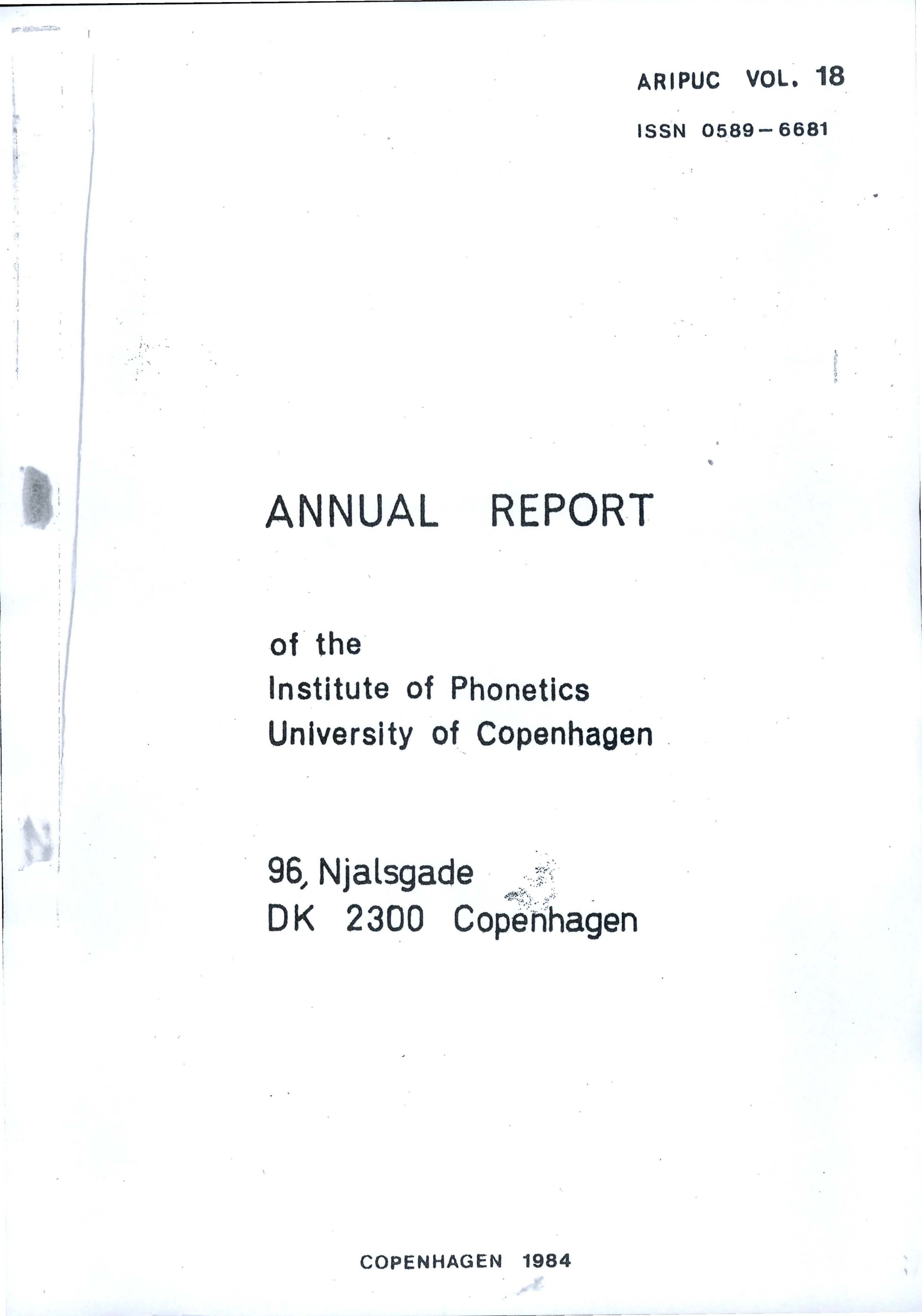The acoustic manifestation of stress in Danish with particular reference to the reduction of stress in compounds
DOI:
https://doi.org/10.7146/aripuc.v18i.131795Abstract
The present investigation of Danish stress is based on a rather extensive material from Standard Danish and from Jutlandish, Funish and North Zealandish dialects. It is found (1) that unstressed syllables are distinguished from stressed syllables by not being able to have stød or phonological vowel length, by shorter duration, by a different Fo pattern which can be described as a different placement on an undulating Fo wave (but Fo pattern differences are not the same in different dialects), and finally often by lower intensity, at least as far as the endings -e [ə] and -er [ɒ/ɔ] are concerned. (2) Syllables with secondary stress retain stød and phonological vowel length but are distinguished from stressed syllables by shortening (although not as much as unstressed syllables), by Fo, behaving in this respect like unstressed syllables, but hardly by intensity except for the dialects which have low Fo on unstressed syllables. (3) Syllables which are reduced by unit accentuation (in relation to a following stressed syllable) lose stød and (at least for monosyllabics) phonological vowel length; they are somewhat more reduced in duration and partly in intensity than syllables with secondary stress, and they behave, as do syllables with secondary stress, like unstressed syllables in the Fo pattern of the stress groups.
Downloads
Published
How to Cite
Issue
Section
License
Copyright holder author

